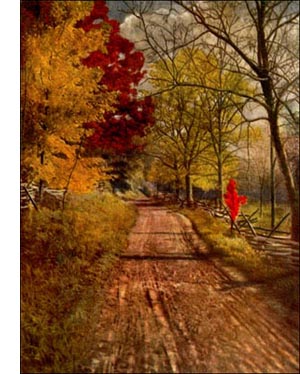Sheepberry Tree
 Sheepberry (Viburnum Lentago, Linn.)-A small. roundheaded tree, of many slender, pendulous branches. Twigs pubescent, becoming smooth. Bark brown, broken into thick, scaly plates. Wood heavy, hard, brownish yellow, close textured, bad smelling. Buds red; axillary long pointed, in two pubescent scales; terminal, button-like, with long, abruptly tapering scales.
Sheepberry (Viburnum Lentago, Linn.)-A small. roundheaded tree, of many slender, pendulous branches. Twigs pubescent, becoming smooth. Bark brown, broken into thick, scaly plates. Wood heavy, hard, brownish yellow, close textured, bad smelling. Buds red; axillary long pointed, in two pubescent scales; terminal, button-like, with long, abruptly tapering scales. Leaves 2 to 3 inches long, ovate, with tapering apex and base, serrate, shining, leathery, opposite, pitted with black underneath; autumn colours orange and red; petioles stout, short, with wavy, winged margins.
Flowers, April to June, in flat cymes, 3 to 5 inches across; white, perfect. Fruit, September, oval, dark blue drupes, sweetish, juicy, smooth, with pale bloom on red pedicels, few in a cluster.
Preferred habitat, moist soil of rocky stream borders or edges of swamps. Distribution, Quebec to Saskatchewan; south to Alabama along Appalachian Mountains; west to Nebraska, Kansas and Wyoming. Uses: Ornamental shrubs or trees in Eastern States.
The sheepberry, with its shining leaves set opposite, is likely to be mistaken for a dogwood. But the prominent, wavywinged margins of the petioles are the best distinguishing character. The multitudinous tiny flowers are in cymes like the elders, and after them come a few oval berries of fair size, dark blue, looking not unlike those of a dogwood, for they hang on coral-red branching stems. They are good to eat-if one is very hungry.
The chief merit of this little tree is its beauty, and because of this it finds its way into many Eastern parks and gardens. There is no season when it is not good to look upon. It is a familiar inhabitant of fence rows and the edges of woodlands. It blooms in late May, and holds its ripe fruits over winter for birds to feed upon.